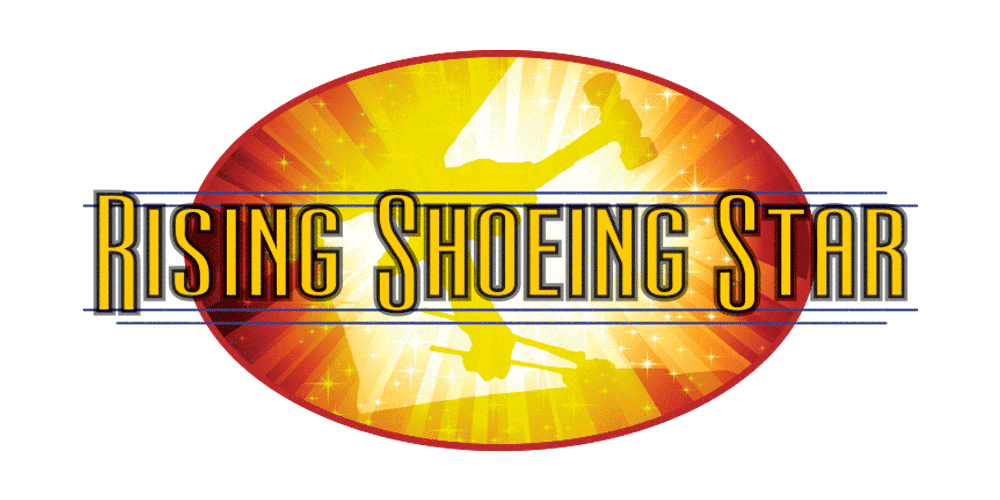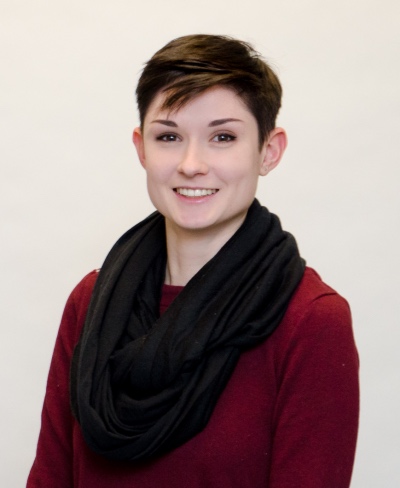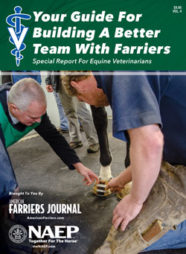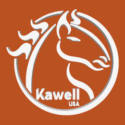Completing farrier school is an event that sparks transformation: a former student suddenly becomes a professional farrier, and from there, often progresses to being a small business owner. The first few years can bring many challenges, but also insight gained through experience. Stanley Mullen of Selwyn, New Zealand, is familiar with this, having graduated in 2015 from the Kentucky Horseshoeing School in Richmond, Ky.
American Farriers Journal established the Rising Shoeing Star award program in 2009. This program recognizes farriers who are making incredible progress in their first 3 years after farrier school.
Farrier Takeaways
- Build up your workload when you’re first starting your practice. That way, you won’t take on more expense than you can afford.
- Don’t be afraid of leaving your comfort zone to get the farrier education you want.
- View mistakes as learning experiences, and use those experiences to shape your career as a farrier.
Mullen was awarded first place in the 2018 Rising Shoeing Star program. His hoof-care career began when his farrier asked whether he wanted to help him out once a week. In this article, he offers advice for new farriers who are going down the same route he took.
Q: What were the major obstacles you faced getting started and how did you overcome them?
A: I was unsure of where to start my learning journey. I’m from New Zealand, a country where most farriers teach themselves and learn from each other, so the choice to leave my home presented quite a challenge.
When I was starting up my business after graduating from the Kentucky Horseshoeing School, I found myself wondering how I would afford to run it. Starting up a business isn’t really easy. I decided to progressively build my workload up as I built my own farrier rig. I started out working out of a truck with a cab on the back. Building my own rig helped me save a lot of money. Of course, having very supportive parents helped a lot. We did it together, all the way through.

Stanley Mullen advises that those seeking a good education in farriery should study with experienced members of the industry.
Everyone starts out slowly in the beginning, and I wasn’t going to come into the market and undercut anyone. But with having a higher price, I found I didn’t have to do as much and that actually saved me money. I wasn’t traveling around for mere pennies — I just worked on some nice horses that didn’t cost me a lot in supplies.
Q: What were your biggest mistakes and what did you learn from them?
A: No mistake is a bad mistake, because you always take something away from your mistakes. One big mistake I made was over-trimming the foot. Not every knife swipe or rasp stroke is beneficial. Mass trumps everything in my eyes. I learned to leave some things behind so I’d have enough depth to burn a healthy piece of steel on and get good nails safely in the hoof.
Q: What were the smartest moves you made getting started and why were they so important?
A: Moving to the United States was the smartest move — first of all, I wouldn’t be where I am if I hadn’t. I’m young in this trade, but being taught in the States and at the Kentucky Horseshoeing School has put me ahead of my time. I learned a lot, particularly from Mitch Taylor and Sam Gooding. Going to clinics and competitions to learn more from experienced farriers also helped. You don’t learn much if you just stay in your own pond, so it’s good to get out and meet new farriers.
Q: What resources, other than schooling, did you find most helpful?
A: The people I surround myself with in competitions and clinics really play a big part in learning. The dedication to fit is one of the biggest subjects at clinics, and everyone there has little differences on how they view it — but they all tend to end up in the same spot at the end. Watching other people trim horses’ feet at competitions can give you insight on what to do or not do.
Nominate A Rising Shoeing Star
To nominate a new farrier who graduated from footcare school in 2016, please send a two-or three-page letter explaining why he or she is a candidate for the 2020 Rising Shoeing Star award.
The deadline for nominations is July 31. Mail your nomination to American Farriers Journal, P.O. Box 624, Brookfield, WI 53118-0624 or email it to
mnelson@lessitermedia.com.








